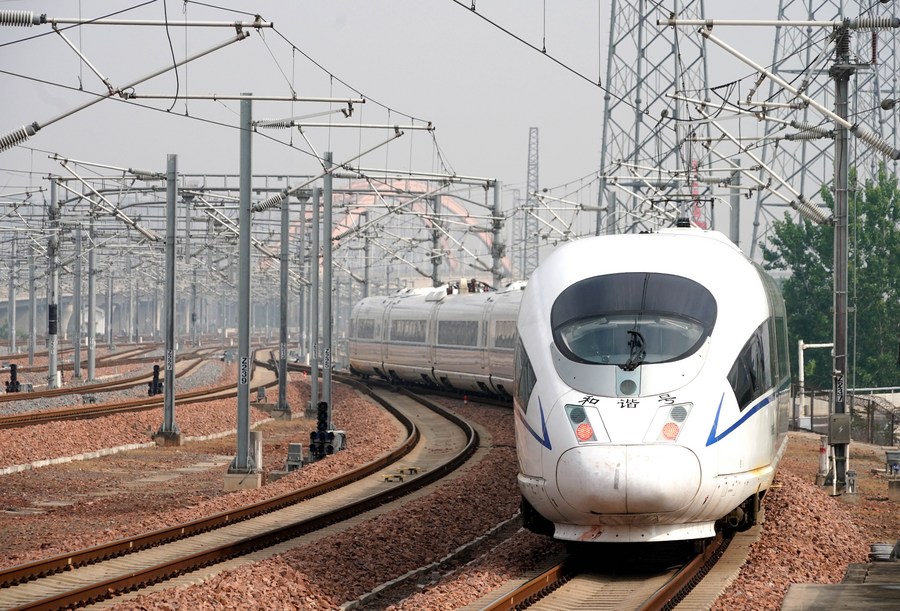Highlights of China's transportation development in past decade

A bullet train departs from Zhengzhou East Railway Station during a trial run in Zhengzhou, central China's Henan Province, April 29, 2022. [Xinhua/Li An]
BEIJING -- During the past decade, China has made historic progress in transportation development, with an improved transport network, strengthened transport service capacity and deepened international cooperation.
Deeming transportation as a frontier in the country's modernization drive, China has accelerated its pace of development to become a country with enormous strength in the transport sector. The following details demonstrate the country's headway in transportation over the past 10 years.
IMPROVED TRANSPORT NETWORK
After years of effort, China has built a large-scale, comprehensive transportation network that connects China with the rest of the world, bolstering the operations of the world's second-largest economy and the biggest trader of goods.
"We have built the world's largest high-speed railway network, expressway network and world-class port clusters. We have also launched air and sea routes that reach every corner of the world," Vice Minister of Transport Xu Chengguang told a press conference.
By the end of 2021, the total length of railways and highways increased by 1.1 million kilometers from that in 2012, which is equivalent to going around the equator about 27.5 times, Xu said.
The length of expressways in operation exceeded 160,000 kilometers, and the road network density was up 24.6 percent from 2012, Xu noted.
China's high-speed railways have stretched to a total length of 40,000 kilometers by the end of 2021, and more than 93 percent of cities with over 500,000 people are linked with high-speed railway connectivity, said An Lusheng, deputy head of the National Railway Administration.
The country has built 82 new airports and launched over 3,000 air routes during the past 10 years, said Dong Zhiyi, deputy head of the Civil Aviation Administration of China.
GREATER TRANSPORT SERVICE CAPACITY
"China has become one of the busiest countries in the world in transportation," Xu Chengguang said.
Over the last decade, the country has seen its key transport indicators including passenger and freight volume of railway, road, waterway and civil aviation, cargo throughput of ports and business volume of postal and express services rank top in the world, Xu noted.
In 2021, ports on average reported over 69,000 ship entries and exits, while airports saw some 26,800 take-offs and landings every day, he added.
During the peak travel season, passenger trains made more than 10,000 trips and expressways saw more than 60 million trips made by vehicles on average every day in 2021, the vice minister said.
China's rail cargo volume, a key indicator of economic activities, went up 22.3 percent compared with 2012 to hit 4.8 billion tonnes in 2021, An Lusheng said.
DEEPENED GLOBAL COOPERATION
During the past decade, China has opened a new chapter in global cooperation in the transportation sector, with steady progress in major projects.
China has exported railway technologies and equipment to more than 100 countries and regions, An said.
The China-Europe freight trains can reach 185 cities in 23 European countries, becoming a focal point of the Belt and Road Initiative, An said.
Regarding cooperation in the aviation sector, China has so far signed bilateral air transport agreements with 128 countries and regions and launched 895 international routes, Dong Zhiyi said.
The number of flights with the Belt and Road countries accounts for more than 60 percent of China's total international flights, Dong noted.
























